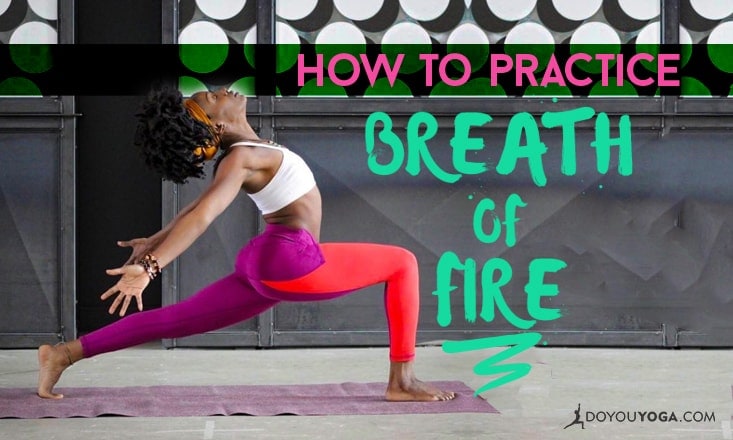Breath Of Fire is a form of cleansing pranayama (breathing technique) rooted in Kundalini yoga. Also known as Kapalbhati, (or Skull Luster, thanks to the tingling sensation in the head post-practice), it can make you feel odd, challenged, and spacey the first few times you try it, but boy-oh-boy, is it worth having the patience to learn!
This intense breathing technique should be avoided if you are pregnant, struggle with vertigo, or have high blood pressure BUT it is wonderful for anyone in chronic pain, people trying to build their inner core strength, students needing to invigorate their minds and those of us with anxiety or depression.
Benefits of the Practice
Calming: Performing Breath of Fire regularly cleanses the lungs and diaphragm, expanding their potential. This in turn makes it possible for us to take deeper breaths and get more of that calming elixir of life, Oxygen.
Detoxing: It also gets the blood circulating through your body in a fast and effective manner, which is very helpful in removing toxins and buildup of other substances.
Pain Relieving: Improving circulation helps us get rid of unhealthy substances that can reflect and manifest as moving aches and pains, but it mostly aids in moving stagnation in the body, which can cause pain.
Strengthening: Breath of Fire exercises the muscles in the abdomen and around the solar plexus (bottom of the chest plate where the ribs meet).
This area is said to be where people living in our modern culture carry a lot of negative emotions—from holding the belly, and subsequently, the lower diaphragm, in to mimic being “skinny.” This release can be exponential in our emotional health, and strengthening the abdominal wall is of course great for spinal health.
Brain Invigoration: It might be all the new blood flow and oxygen in the brain, it might be the relief from scholarly anxiety, or it might be the five-minute break that this technique requires you to take—whatever it is, using this technique mid-study sesh is incredibly helpful in invigorating the mind. It improves memory function, energy levels, and brain activity monumentally!
How to Do It
It is important to remember that it takes time to build up to the full practice of Breath Of Fire. Beginners should start with a short amount of time (30 seconds is great), and at a slightly slower rate.
- Sit up tall, lengthening the space between your navel and your heart.
- Breathe in and out through the nose and start to pull your abdomen in during the exhale, and press it out during the inhale. Imagine your belly fills up with air during the inhale and use your abdominal muscles to push the air out during the exhale.
- Start to shorten each breath and pick up the pace. The breathing should be loud and quick.
- Try to equalize the inhale and the exhale in both strength and length.
Post-pranayama, always pause and take a few smooth deep breaths as you sit and listen for the immediate effects of the practice. Tingling is completely normal (and quite wonderful!).
After a while, you may do 2-3 sets of 30 seconds with a few smooth, long breaths in between. One day in the future, you will reach four minutes at a rate of four breaths per second.
The benefits of Breath Of Fire are immense, and only build on one another over time. It is an ancient technique that is used frequently in modern day practice as a cleansing ritual, and as a way to bring about a separation between a busy schedule and a smooth yoga practice…eventually melting the two together as one.
Now you know the basics of what this fascinating technique is all about and can use it to benefit your health!
Image credit: Tie Simpson


